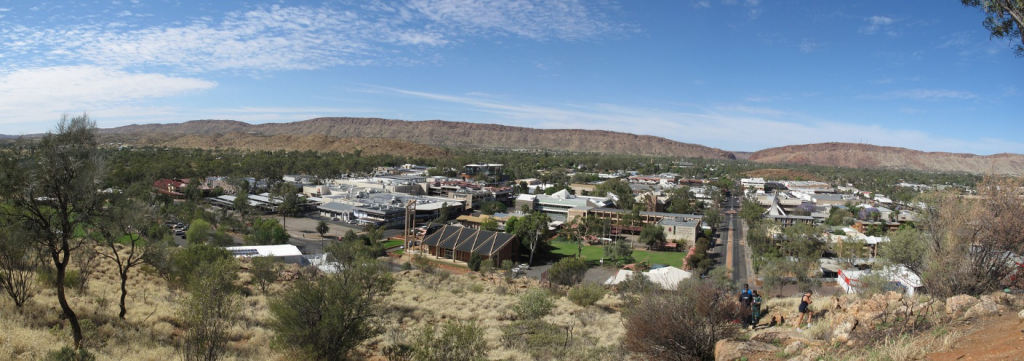In the middle of Australia’s red desert center is a culturally sacred “UNESCO World Heritage” site for those known as the Anangu people. These are the original Aboriginal landowners for the area. The site is home to a beautiful red rock formation known to tourists as “Ayers Rock,” but commonly referred to in its Indigenous, traditional context as “Uluru.” Following Indigenous belief, the formation has been standing for millions of years.
Tourists travel from all over the world to see this rare, awe-inspiring, natural wonder. There are luxury accommodations dedicated specifically in honor of the landmark, including the Longitude 131 in Ayers Rock resort. These are among the only luxuries you will find in the humble location as you will find yourself a distance away from the “comforts of home” while exploring the rock and the surrounding area.
The Reasons For The Ban On Climbing Ayers Rock
It is important that you indulge in the comforts afforded you while at Ayers Rock Resort because you will need to be spoiled after a long day of exploration at the sacred site. Uluru boasts as being “348 meters” above ground and “863” meters of sea level with a substantial portion of the overall structure buried beneath the earth, and approximately 10 kilometers wholly in circumference.
The original landowners were given the site back with a lease of nearly 100 years provided for the “Australian Parks/Wildlife Service” so that they can help with running things and maintaining it. It takes a substantial amount of work since tourism can range up to hundreds of thousands of people to the isolated site in the middle of the desert.
People around the world are drawn to the rare beauty desiring an understanding of its “cultural significance.” One aspect that has been continuously debated is whether people should be allowed to climb the rock. Most of Australia is aware of the Anangu people’s wish that no one does so with signs created by the natives asking that people please respect their request.
Considerations to avoid a ban were based on economic stimulation for the local indigenous population along with the Northern Territory. But the people stood very strongly that their beliefs be respected. Learn the “do’s and don’ts” for Ayers rock at https://borderlessbritt.home.blog/2018/10/18/the-dos-and-donts-of-uluru/ .
Reasons for the ban to be implemented include:
** The Site Is A Sacred Indigenous Location
Signs can be seen within the location asking that tourists abide the cultural laws by avoiding attempts to scale the side of the rock, not litter, and overall, not be inconsiderate as a visitor. The native people are consistent with their requests.
The walk that tourists take part in at Uluru has association with “Mala” men’s traditional route and is noted as having a substantial spiritual significance. This spiritual culture dictates that “people must take personal responsibility for their actions.”
With those beliefs in mind, instead of making the ban on climbing an official government ruling, the Anangu prefer that visitors “choose” to respect the people’s culture and their laws on their own out of respect due to the native culture.
As far as the beliefs represent, individuals will know right from wrong, so when a “traditional landowner” places a sign giving you the choice of a right/wrong decision, you’ll automatically ally follow the landowners’ request. The option of hiking the base trail is a suitable alternative for viewing.
** Climbing The Rock Is A Significant Hazard
Claims indicate that over the last several decades, nearly 40 people have died in attempting to climb Ayers Rock. Maneuvering across Uluru is not easy, but instead strenuous and something only those tourists with experience should attempt.
This creates a liability for the landowners who believe anyone who is injured on their land is their responsibility. Tourists do not realize there is a genuine possibility of not surviving with some not employing adequate safety checks. That is a major concern for the locals who want to “safeguard” those visiting. The best way to do this is to disallow the climbs.
** Some Works Of Art Are Meant To Simply Be Seen
There are some things that you are simply meant to view and not physically interact with. When you visit a museum, you cannot take the works of art down and handle them to see them better.
There are other locations where you can climb to your heart’s content if that is your soul desire. Uluru is supposed to offer a different, deeper, more sacred intention for its visitors. It is not a hiking or climbing vacation. It is a spiritually significant experience. If that does not touch you or offer you any kind of benefit, this would be a holiday that you should probably avoid.
In scaling such a beautiful, natural land formation with so many people going up and down consistently, there is the potential for damaging the rock over time. Ruining an ancient site for people who hold it in such high regard is, to say the least, the most substantial form of disrespect.

Final Thought
People travel from all around the globe to visit the incredibly beautiful red desert center with a majority hopeful to learn about the culture, history, and to experience spirituality. Many enjoy being spoiled with the sharp contrast between the luxurious accommodations like Longitude 131 and the modesty of the people and their surroundings. Read this for activities you can enjoy when on the holiday here.
It is the hope of the Anangu natives that tourists come to learn about their traditions and the culture. Their hope is that those who come respect both. The best part of any holiday is in meeting and getting to know the local people. In doing so, you can learn about the rock formation. Rather than climbing and risking damage to the beloved landmark, you can hike across the base, which notes to be expansive, experiencing what is significantly spiritual for those original to the area.
The landowners make their wishes known with signs, and their only expectation is that tourists do the responsible thing. According to the cultural belief system, everyone understands right from wrong.
The Anangu soundly believe that a sign should be all that is necessary to let people know their wishes pertaining to climbs, instead of a government-issued ban because ultimately people are responsible for their own actions. We can only hope that the tourists do not let them down.
 Trip Alertz For Jetsetters, By Jetsetters
Trip Alertz For Jetsetters, By Jetsetters


